JUDGMENT OF THE GENERAL COURT (First Chamber)
9 September 2011 (*)
(Community design – Invalidity proceedings – Registered Community design representing an internal combustion engine – Earlier national design – Ground for invalidity – No individual character – Visible features of a component part of a complex product – No different overall impression – Informed user – Degree of freedom of the designer – Articles 4, 6 and 25(1)(b) of Regulation (EC) No 6/2002)
In Case T‑11/08,
Kwang Yang Motor Co., Ltd, established in Kaohsiung (Taiwan), represented by P. Rath, W. Festl-Wietek and M. Wetzel, lawyers,
applicant,
v
Office for Harmonisation in the Internal Market (Trade Marks and Designs) (OHIM), represented by G. Schneider, acting as Agent,
defendant,
the other party to the proceedings before the Board of Appeal of OHIM, intervener before the General Court, being
Honda Giken Kogyo Kabushiki Kaisha, established in Tokyo (Japan), represented by T. Musmann, H. Timmann, M. Büttner and S. von Petersdorff‑Campen, lawyers,
ACTION brought against the decision of 8 October 2007 of the Third Board of Appeal of OHIM (Case R 1380/2006-3), relating to invalidity proceedings for Community designs between Honda Giken Kogyo Kabushiki Kaisha and Kwang Yang Motor Co., Ltd,
THE GENERAL COURT (First Chamber),
composed of J. Azizi (Rapporteur), President, E. Cremona and S. Frimodt Nielsen, Judges,
Registrar: E. Coulon,
having regard to the application lodged at the Registry of the Court on 7 January 2008,
having regard to the response of OHIM lodged at the Registry of the Court on 23 May 2008,
having regard to the response of the intervener lodged at the Registry of the Court on 5 May 2008,
further to the hearing on 2 February 2011,
gives the following
Judgment
Background to the dispute
1 On 2 April 2004, the applicant, Kwang Yang Motor Co., Ltd, filed an application for registration of a Community design with the Office for Harmonisation in the Internal Market (Trade Marks and Designs) (OHIM), pursuant to Council Regulation (EC) No 6/2002 of 12 December 2001 on Community designs (OJ 2002 L 3, p. 1).
2 The design for which registration is sought is represented as follows:
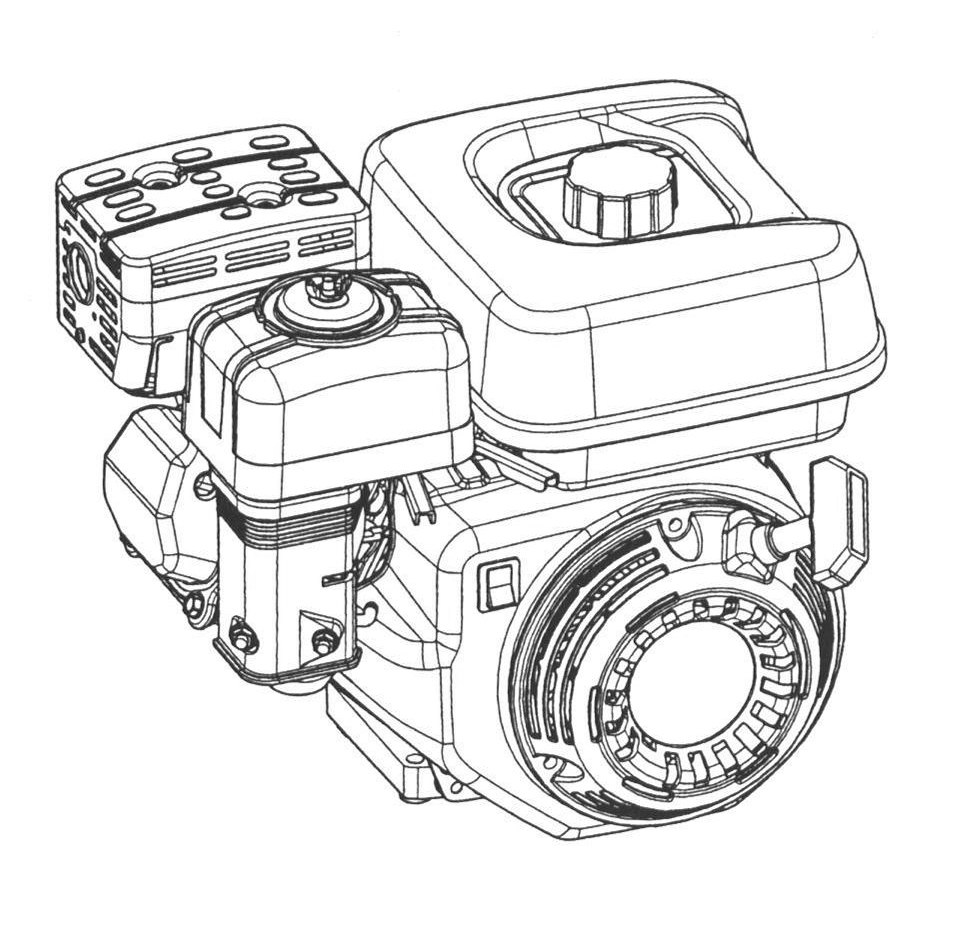
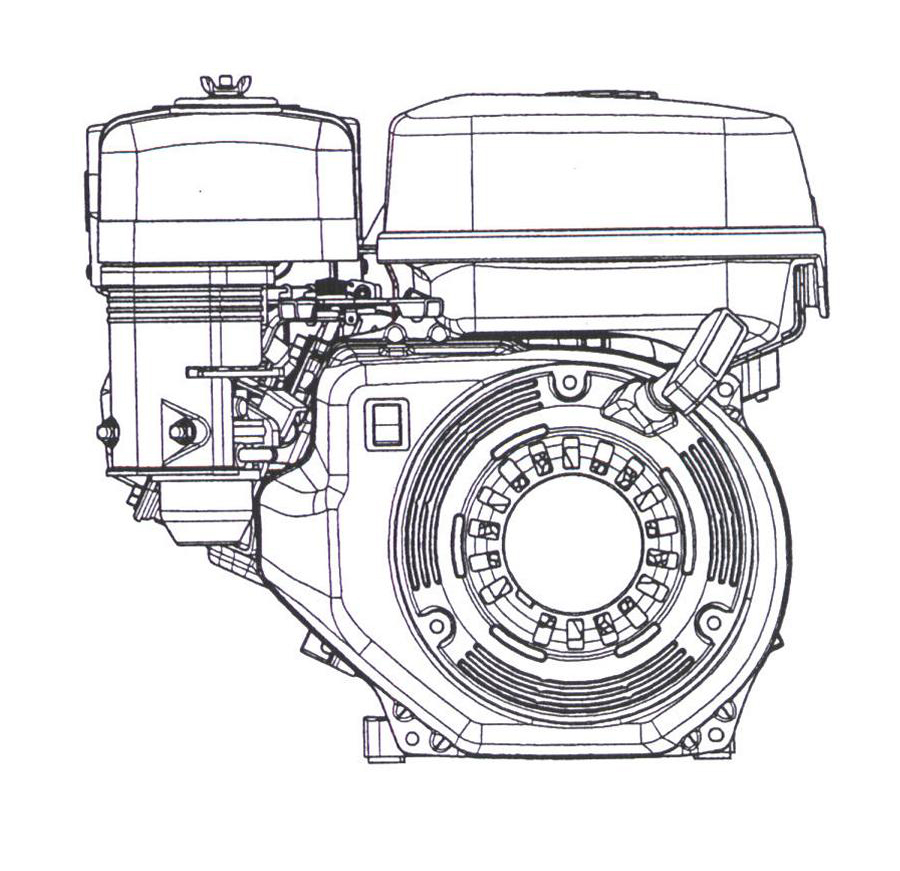

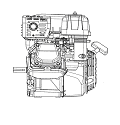
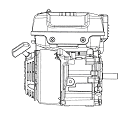
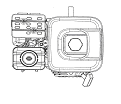

3 The challenged design is intended to be applied to an ‘internal combustion engine’ in Class 15.01 of the Locarno Agreement Establishing an International Classification for Industrial Designs of 8 October 1968, as amended.
4 The challenged design was registered on 2 April 2004 as a Community design under No 163290-0002 and published in the Community Designs Bulletin No 2004/055 of 29 June 2004.
5 On 17 May 2005, the intervener, Honda Giken Kogyo Kabushiki Kaisha filed an application with OHIM for a declaration of invalidity with respect to the challenged design pursuant to Article 52 of Regulation No 6/2002. The ground relied on in support of the application for a declaration of invalidity was that referred to in Article 25(1)(b) of Regulation No 6/2002, since the design does not fulfil the requirements for protection in Articles 4 to 6 thereof for lack of new and individual character. It claimed, inter alia, that the challenged design was identical to that protected by the design registered in the United States under Reference D282071 (‘the earlier design’), which is represented as follows:
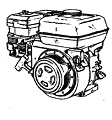
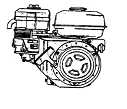

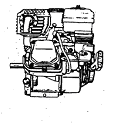


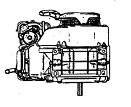
6 By decision of 30 August 2006, the Invalidity Division rejected the application for invalidity on the ground that, pursuant to Article 4(2) of Regulation No 6/2002, the features of a complex product which are not visible during its normal use should be left aside when considering the novelty and individual character of the product in question. It held, therefore, that only features of the engine that remain visible when it is installed on the apparatus should be looked at, which is particularly relevant as regards the upper part of the engine. It was not identical to the earlier design. It held that their visible features present various differences, so that the challenged design was new. Neither was the challenged design devoid of individual character in so far as the upper side of the engine produced a different impression on the informed user on account of differences in shape and position of certain component parts.
7 On 25 October 2006, the intervener appealed under Articles 55 to 60 of Regulation No 6/2002 against the decision of the Invalidity Division.
8 By decision of 8 October 2007 (‘the contested decision’), the Third Board of Appeal annulled the Invalidity Division’s decision and declared the challenged design to be invalid, on the ground that it lacked individual character, within the meaning of Article 6 of Regulation No 6/2002, because it produced on an informed user an overall impression that did not differ from that produced by the earlier design (paragraph 13 of the first contested decision). It held that an internal combustion engine was a component part of a complex product within the meaning of Article 4(2) of Regulation No 6/2002 (paragraph 15 of the contested decision). Furthermore, the Board of Appeal pointed out that the proprietor of the challenged design had failed to indicate in its application for registration in what complex products the internal combustion engine was to be incorporated. The Board of Appeal therefore made the assumption, which was not contested by the parties, that that engine would be installed in air compressors, electricity generators, pumps, chipper/shredders, lawnmowers and go-karts (paragraph 15 of the contested decision). Depending on the complex product in which it is installed, the engine was hidden under a hood or left out completely or mostly uncovered (paragraph 16 of the contested decision). When the engine is installed in the complex products, the component parts of the engine that remain visible during normal use of the complex product are primarily the upper side and the front side and the lateral sides. The rear side is less visible because it is the side which is fastened to the chassis of the complex products and the underside is not visible at all because it faces the ground (paragraph 18 of the contested decision). As to the individual character of the challenged design, the Board of Appeal concluded that that should be assessed on the basis of the overall impression produced primarily by the upper side of the engine on an informed user of the complex products. It defined the latter as someone who wishes to use one of the relevant complex products and has become informed on the subject.
9 The Board of Appeal also made a comparison between the overall impression produced by the challenged design and that produced by the earlier design (paragraphs 20 to 34 of the contested decision), the publication of which was able to prove that the earlier design had been made public prior to the filing of the challenged design (paragraph 21 of the contested decision). It found the arrangement of the components in the designs at issue to be identical even though that was not necessary from a technical point of view. It also observed a strong resemblance between the shapes and sizes of the components of the internal combustion engines. According to the Board of Appeal, in order to assess the overall impression produced by the challenged design and the earlier design, it was not necessary to carry out an excessively detailed analysis of the various component parts of the internal combustion engines. Furthermore, it took the view that the overall impression produced on an informed user was more likely to be influenced by the general appearance of the designs at issue, in particular the arrangement of the components, their size and general shape, than by minor details (paragraph 35 of the contested decision). It concluded that, on account of similarities in shape, position and relative size of the components of the designs at issue, the overall impression produced by them was the same (paragraph 37 of the contested decision). It also found that designers of internal combustion engines have a high degree of freedom and held that that reinforced the conclusion that the challenged design produced on the informed user the same overall impression as the earlier design (paragraph 37 of the contested decision).
Forms of order sought
10 The applicant claims that the Court should:
– annul the contested decision;
– order OHIM to pay the costs.
11 OHIM and the intervener contend that the Court should:
– dismiss the action;
– order the applicant to pay the costs.
Law
12 The applicant puts forward a single plea, claiming essentially, infringement of Article 4(2) of Regulation No 6/2002, read in conjunction with Article 6 thereof.
13 In that plea, the applicant claims that the differences between the designs at issue are such that the overall impressions produced on an informed user are different and that the challenged design is not devoid of individual character. In that connection, it challenges the Board of Appeal’s assessment concerning the visible parts of the engine during its use. Furthermore, it claims that the freedom of the designer when developing the challenged design is limited.
14 OHIM and the intervener contest the applicant’s arguments.
15 The intervener claims that certain documents lodged by the applicant with its application are inadmissible as they were produced for the first time before the Court.
Overview
16 Under Article 4(1) of Regulation No 6/2002, the protection of a Community design is dependent on its being new and having individual character. Furthermore, according to Article 4(2) of Regulation No 6/2002, a design which constitutes a component part of a complex product is only considered to be new and to have individual character if the component part, once it has been incorporated into the complex product, remains visible during normal use and to the extent that those visible features of the component part fulfil in themselves the requirements as to novelty and individual character.
17 Article 6(1)(b) of Regulation No 6/2002 also states that the individual character must be assessed, in the case of a registered Community design, in light of the overall impression produced on an informed user, which must be different from that produced by any design made available to the public before the date of filing of the application for registration or, if priority is claimed, before the date of priority. Article 6(2) of Regulation No 6/2002 states that in assessing individual character, the degree of freedom of the designer in developing the design is to be taken into consideration.
18 Therefore, in assessing the individual character of the challenged design, it must be examined, in accordance with Article 4(2) and Article 6 of Regulation No 6/2002, whether the overall impression that that design produces on an informed user is different from that produced by earlier designs existing before 2 April 2004, in particular, the design relied on by the applicant in support of the application for a declaration of invalidity, taking account of the degree of freedom enjoyed by the designer when developing the design.
19 For a design constituting a component part of a complex product, like that in the present case, it is necessary to determine whether that component part remains visible during normal use of the complex product and whether the visible features of that component part produce on an informed user an overall impression different from that produced by another design which was made available to the public before 2 April 2004.
The classification of the challenged design as a component part of a complex product
Design challenged as a component part of a complex product
20 The applicant has accepted that the challenged design constituted an internal combustion engine which could be incorporated into a lawnmower. Therefore, it must be considered that the challenged design constitutes a component part of that complex product. Furthermore, it is common ground that internal combustion engines are generally used for lawnmowers. The incorporation of the challenged design into a lawnmower may therefore serve as a basis for determining, first, whether the challenged design remains visible during normal use of the complex product, the lawnmower, by the end user and, second, whether the overall impression produced on an informed user by the visible features differ from that produced by another design which was made available to the public before 2 April 2004.
Visible parts of the component part during normal use
21 The applicant challenges the Board of Appeal’s assessment that the parts of the challenged design remaining visible during normal use of the complex product, once the engine is mounted on the lawnmower, are principally the upper side of the motor, then the front and lateral sides, whereas the rear side is less visible and the underside is not visible at all (paragraph 18 of the contested decision). It takes the view that the rear side and underside of the engine must not be neglected.
22 In that connection, it must be held that the Board of Appeal’s assessment is not vitiated by any error. During the normal use of a lawnmower, it is placed on the ground and the user stands behind it. Thus, the user, standing behind the lawnmower sees the engine from the top and, therefore, sees principally the upper side of the engine. That is also true for the other complex products which rest or are moved along the ground. It follows that the upper side of the engine determines the overall impression produced by the engine.
The individual character
The informed user
23 According to the case-law, an ‘informed user’ within the meaning of Article 6 of Regulation No 6/2002 is neither a manufacturer nor a seller of the products in which the designs at issue are intended to be incorporated or to which they are intended to be applied. An informed user is particularly observant and has some awareness of the state of the prior art, that is to say the previous designs relating to the product in question that had been disclosed on the date of filing of the contested design (Case T‑9/07 Grupo Promer Mon Graphic v OHIM – Pepsico (Representation of a Circular Promotional Item) [2010] ECR II‑0000, paragraph 62).
24 Furthermore, the status of ‘user’ implies that the person concerned uses the product in which the design is incorporated, in accordance with the purpose for which that product is intended (Case T‑153/08 Shenzhen Taiden v OHIM – Bosch Security Systems (Communications Equipment) [2010] ECR II‑0000, paragraph 46).
25 The qualifier ‘informed’ suggests in addition that, without being a designer or a technical expert, the user knows the various designs which exist in the sector concerned, possesses a certain degree of knowledge with regard to the features which those designs normally include, and, as a result of his interest in the products concerned, shows a relatively high degree of attention when he uses them (Communications Equipment, paragraph 47).
26 However, that factor does not imply that the informed user is able to distinguish, beyond the experience gained by using the product concerned, the aspects of the appearance of the product which are dictated by the product’s technical function from those which are arbitrary (Communications Equipment, paragraph 48).
27 Therefore, an informed user is a person having some awareness of the existing designs in the sector concerned, without knowing which aspects of that product are dictated by technical function.
28 In the present case, the Board of Appeal defined an informed user of air compressors, electricity generators, pumps, chipper/shredders, lawnmowers and go-karts as being someone wishing to use one of those products, who, for example, needs to purchase one, and who has become informed on the subject.
29 The applicant has not challenged that assessment as such. It has argued however, in another context, that the internal combustion engine that constitutes the challenged design is sold to engine manufacturers of devices such as those mentioned in paragraph 28 above, in which internal combustion engines are installed, and not to the end user.
30 In that connection, it must be observed that the definition of an informed user adopted by the Board of Appeal in the contested decision is correct. As stated in paragraph 22 above, account must be taken, in the present case, of the normal use of the complex products concerned. Therefore, the Board of Appeal has not committed any error in holding that an informed user was a person wishing to use one of those products, who, for example, needs to purchase one, and who has become informed on the subject.
The designer’s degree of freedom
31 In the assessment of the individual character of the designs at issue, its visible features and therefore the overall impression on the informed user of the design, the designer’s degree of freedom in developing the challenged design must be taken into account (see, to that effect, Representation of a Circular Promotional Item, paragraph 72).
32 As the Court has recognised in its decisions, the designer’s degree of freedom in developing his design is established, inter alia, by the constraints of the features imposed by the technical function of the product or an element thereof, or by statutory requirements applicable to the product. Those constraints result in a standardisation of certain features, which will thus be common to the designs applied to the product concerned (Representation of a Circular Promotional Item, paragraph 67).
33 Therefore, the greater the designer’s freedom in developing the challenged design, the less likely it is that minor differences between the designs at issue will be sufficient to produce a different overall impression on an informed user. Conversely, the more the designer’s freedom in developing the challenged design is restricted, the more likely minor differences between the designs at issue will be sufficient to produce a different overall impression on an informed user. Therefore, if the designer enjoys a high degree of freedom in developing a design, that reinforces the conclusion that the designs which do not have significant differences produce the same overall impression on an informed user.
34 In the present case, the Board of Appeal held that the designers of internal combustion engines had a high degree of freedom in designing such engines. It took the view that no limit was imposed as to the shape of the upper side of those engines and that the components of the engines concerned could be positioned differently without altering the functionality or the aesthetic considerations.
35 That finding is challenged by the applicant, which asserts that the technical and functional requirements for internal combustion engines considerably restrict the designers in developing designs for such engines.
36 In that connection, it must be observed that, in the case in the main proceedings, while certain components of internal combustion engines, such as the fuel tank and the vent, are essential and must be present in any internal combustion engine, their shape, configuration and their placement are not dictated by technical and functional constraints. Therefore, the general appearance of the internal combustion engine, particularly the appearance of the upper side thereof, is not determined by technical constraints and the designer of the internal combustion engine has a great deal of freedom to choose the shape of the components of that engine and their position.
37 As appears from the representations of engines produced by the intervener during the proceedings before OHIM and the General Court, there are designs for internal combustion engines in varying shapes and configurations which differ considerably from those used in the challenged design. Internal combustion engines exist in a wide variety of shapes and combinations of components, as the informed user of such an engine, who has some knowledge of the relevant industrial sector, is aware. Those documents show, for example, that the fuel tank may also be placed on the lateral side of the engine rather than on the top, and that the air filter may also be positioned on the lateral or underside of the engine. Thus, there are differences between the shapes of the components of an internal combustion engine and their arrangement, which shows the possibility of variations and differences in the design of internal combustion engines. It follows that the placement of those components is not dictated by functional requirements. Therefore, the general appearance of the visible features of the internal combustion engine is not determined by technical constraints. Since the positioning and shape of the components of an internal combustion engine are not limited by any particular technical necessity, the designer’s degree of creativity with respect to such internal combustion engines is not limited.
38 It follows that the Board of Appeal has not committed an error in holding that the designers of internal combustion engines enjoy a high degree of freedom in the development of designs relating to those internal combustion engines including the challenged design.
The comparison of the overall impressions produced by the visible features of the internal combustion engines and the conclusion on the individual character of the challenged design
39 The Board of Appeal took the view that the overall impression produced by the challenged design was the same as that produced by the earlier design on account of similarities of shape, position and relative size of the various components of the internal combustion engine.
40 The Board of Appeal held that the overall impression produced on an informed user was principally determined by the general appearance of the upper side of the engine, and by the arrangement of the various components of the internal combustion engine, their shape and size in relation to each other, and not by a multitude of technical details.
41 The applicant challenges the Board of Appeal’s assessment in the contested decision. It argues that the overall impression produced by the challenged design is different from that produced by the earlier design. It claims that even slight differences must be taken into consideration in the assessment of the individual character of the designs at issue. In that connection, it submits a detailed analysis of those designs and concludes that the features of those designs are not identical and that, therefore, the overall impressions that the designs at issue produce are different.
42 In that connection, it must be held that the Board of Appeal’s assessment is not vitiated by an error. The upper sides of the designs at issue are similar in appearance, both as regards the general shape of the internal combustion engines and as regards their components and their position. The front and lateral sides of the designs at issue are also similar. The filter cover, the fuel tank, the vent and the muffler cover are arranged in an identical manner in the designs at issue. The vent in the challenged design has a rounded shape with straight openings at the rear of the engine. The crescent or ‘c’ shaped fuel tank in the challenged design is almost identical to that in the earlier design and the fuel tank is situated in the same place in the designs at issue. Furthermore, the proportions, arrangements, layouts, sizes and shapes of the components of the internal combustion engine are almost identical in the designs at issue.
43 The shape, dimensions and arrangement of the various components of the internal combustion engine are more important than differences in details. The two designs at issue produce identical impressions on account of the shape and arrangement of their principal components and have the same basic structure.
44 The details relied on by the applicant cannot have any impact on the overall impression produced on an informed user by the two internal combustion engines represented by the designs at issue. An informed user will be guided by the basic structures alone and not by differences in the details, which do not produce different overall impressions on him.
45 It is clear from all of the foregoing that the Board of Appeal has not committed an error in its assessment of the individual character of the designs at issue, as the overall impression produced on an informed user by the challenged design does not differ from that produced by the earlier designs, including the earlier design registered in the United States.
46 Therefore, the applicant’s single plea and the action in its entirety must be dismissed, without there being any need to give a ruling on the admissibility, challenged by the intervener, of certain documents submitted by the applicant to the Court.
Costs
47 Under Article 87(2) of the Rules of Procedure of the Court, the unsuccessful party is to be ordered to pay the costs if they have been applied for in the successful party’s pleadings.
48 Since the applicant has been unsuccessful, it must be ordered to pay the costs in accordance with the forms of order sought by OHIM and the intervener.
On those grounds,
THE GENERAL COURT (First Chamber)
hereby:
1. Dismisses the action;
2. Orders Kwang Yang Motor Co., Ltd to pay the costs.
Azizi | Cremona | Frimodt Nielsen |
Delivered in open court in Luxembourg on 9 September 2011.
[Signatures]